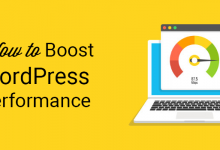
Before dwelling deep into this article, let’s first understand what a front end is. When you see a website as a consumer, you see all the flashy work, the colorful fonts, embezzled texts, polls, etc. This is where you interact with a website. Hence, the front end is basically the interface of a website. Backend, on the other hand, deals with all the coding and algorithms that go on in the background. This includes database and server management, machine learning for chatbots, etc.
A few years ago, people considered front-end developers subordinate to code developers. However, with the increasing competition in the digital space, the demand for skilled front-end developers has reached a greater extent than ever. Studies show that website engagement depends primarily on the quality of the front end.
Businesses with a solid online presence have a functional web design that interacts with the consumer efficiently. For example, if you are working for an e-commerce website, you must design the website in a way that leads the consumer smoothly to the checkout page without any glitches. Also, you must use specific keywords in your website to feature in the top 10 search results. In the modern world of digitization, front-end developers are in high demand, taking home a hefty sum. If you are an aspiring front-end developer, here are some vital skills you need.
Table of Contents
HTML and CSS
HyperText Markup Language and Cascading Style Sheets provide skeletal structure to the website. Learning HTML and CSS should be your starting point as they provide a basic understanding of how a website works, where you can learn these in a Master of Computer Application course.
However, HTML and CSS are not enough because they are only suitable for static design. Therefore, a website that is entirely text-based can use HTML and CSS. However, considering the vast market competition today, you must bring something more to the table.
Now, HTML provides an underlying structure to the website. That is, only get a basic idea of what the website should look like. On the other hand, CSS is used to style the HTML elements that are used. You can style these elements with colors, fonts, typeface, etc.
JavaScript
JavaScript is the fun element of a website. As discussed earlier, HTML and CSS are only good for static websites with text-only designs, and such websites were popular at the start of this century.
However, in the past few years, the principles of website design have changed considerably. Several online businesses have come to light that use only virtual platforms. Therefore, it is crucial for their success that these virtual platforms interact well with the consumers.
Additionally, consumer data plays a huge role if a business wants to flourish. Hence, contemporary websites must engage the consumers and extract behavioral data for future use. For this reason, a thorough understanding of JavaScript is very crucial.
JavaScript adds dynamic elements to a website. In simpler terms, Javascript is a front-end programming language, and some people may also call this a client-based programming language. JavaScript is primarily used by developers looking to build a responsive website.
You can use this tool to add consumer engagement ideas such as forms, pools, etc., to your website. Moreover, you can also use JavaScript to add slides, animations, audio, video, etc.
Frameworks and Libraries
Frameworks and Libraries are used to add consumer engagement elements to a website. If you are building a website where you want to establish a relationship with the user by asking for their general details like name, email, and contact number, you can use frameworks.
Additionally, if you want to incorporate login restrictions on the first page of your website, frameworks are the way to go. Now, the framework is a pre-written module in Java that is reusable. Since it is available on an open-source platform, you can customize it to your own needs. Some popular JavaScript frameworks are AngularJS, Ember, and ReactJS.
Libraries are collections of plugins and extensions. They are used to add certain general and prefabricated elements to a website. So, for example, if you are designing a website that runs limited-time offers, you can use libraries to add a countdown timer at the header of the website.
You can use jQuery as your library. jQuery is an open-source platform with customizable options and is extremely popular with front-end developers.
Version Control
Version control is a convenient software tool that assists in tracking changes to a code. Several experienced front-end developers are thorough with this software technology, and it helps in comparing the earlier versions of a code to an older version.
Additionally, it helps you understand the recent changes made to a website. It helps as a damage control tool if you want to restore the older version of the code. Version control is also helpful in tracking technical glitches and bugs in a website.
You can use this software as a backup option for the original source code. Lastly, version control also doubles as a collaborative software where several front-end developers can download the source code, make changes, notify and upload the code again. Git version control system is a popularly used software among front-end developers.
Cross-browser and device testing
With the advent of smart devices, the ways of website design have changed. A few decades ago, the front end was only concerned with the website layout on the PC. But today, we have other accessibility tools such as smartphones, laptops, and tablets.
Hence, depending on the screen resolution and size, the website layout changes. Therefore, front-end developers have to use auto fine-tune tools that adjust the website’s layout according to its device.
These tools adjust the font, click buttons, etc., to maintain the user experience. Similarly, several browsers have different source codes; hence, the website must be fine-tuned as per the specific browser. Therefore, front-end developers also use dedicated browser tools to test their websites across different platforms and make final changes accordingly.
WPO and SEO
Web performance optimization helps in adjusting the website per the existing network. A slow-loading website hampers community engagement. Therefore, WPO tools are necessary to ensure that the website loads smoothly on all devices.
Softwares like Grunt optimizes the front end by downsizing the images and making the fonts lighter so that slower internet users can easily access the website. Similarly, SEO refers to search engine optimization, which is a great way to improve traffic on a website through search engine results.
You can pursue a dedicated course on SEO to understand how the search engine algorithm works and what keywords you should use. Having a thorough understanding of SEO will make you a complete front-end developer. Therefore, you can pursue a digital marketing course to become a complete package.
Conclusion
Front-end developers are responsible for bringing business to an organization, and they design the face of the company, which determines customer engagement. You may also consider front-end developers as an extended part of the market team.
If you are an aspiring front-end developer, visit online platforms to learn extensively about the skills and courses. Additionally, read more about digital marketing and vacancies for front-end developers to enhance your interest in the field. With the expanding digital space, the demand for skilled front-end developers has reached a greater extent than ever, and online training platforms can help you realize your goals.
Follow TodayTechnology for more!








